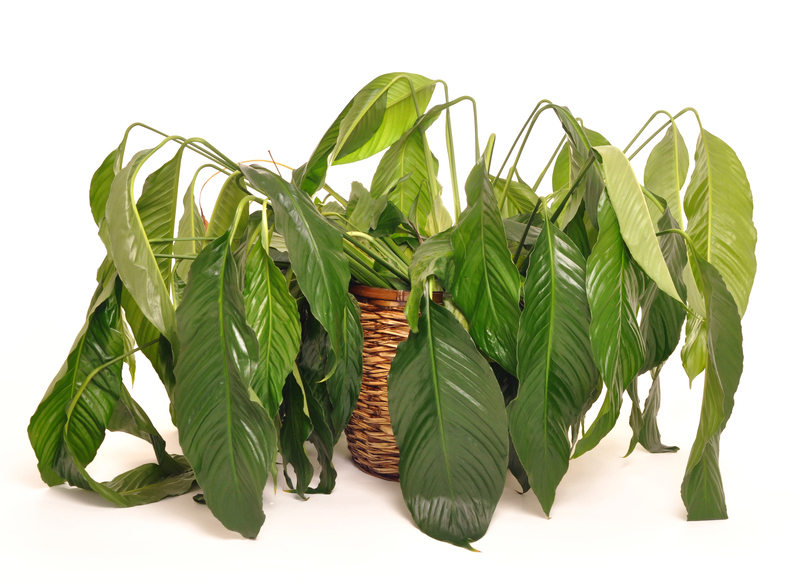Start Rewilding Your Backyard
Posted on 21/03/2025
Rewilding your backyard is an exciting and impactful way to create a natural habitat right outside your door. Not only does it help restore biodiversity, but it also offers numerous personal benefits, such as improved mental well-being and a closer connection to nature. Whether you have a small plot of land or a sprawling garden, rewilding can transform your space into a thriving ecosystem.
Understanding Rewilding
Rewilding is a conservation process aimed at restoring and protecting natural processes and wilderness areas. This movement has gained traction worldwide as people recognize the urgency of mitigating biodiversity loss and battling climate change. In the context of a backyard, rewilding involves introducing native plants, creating habitats for wildlife, and minimizing human intervention to let nature take its course.

Benefits of Rewilding Your Backyard
There are numerous advantages to rewilding your backyard, both for the environment and for you personally. Here are some compelling reasons to embark on this journey:
1. Enhancing Biodiversity
One of the primary goals of rewilding is to restore biodiversity. By planting a variety of native flora, you create a habitat that supports various insects, birds, and small mammals. Native plants are well-adapted to your local climate and soil, providing food and shelter for local wildlife.
2. Improving Mental Health
Spending time in nature has been proven to reduce stress, anxiety, and depression. A rewilded backyard offers a tranquil retreat where you can unwind and connect with the natural world. The sights and sounds of birdsong, rustling leaves, and colorful blooms can have a profound calming effect.
3. Supporting Pollinators
Pollinators like bees, butterflies, and other insects play a crucial role in maintaining healthy ecosystems. By introducing native plants, you provide these vital creatures with the resources they need to thrive. This, in turn, supports not only your garden but also the broader ecosystem.
4. Reducing Carbon Footprint
Plants absorb carbon dioxide and release oxygen, helping to mitigate climate change. A rewilded garden, with its rich plant diversity, can sequester more carbon than a conventional lawn. Additionally, less reliance on chemical fertilizers and pesticides reduces pollution.
Steps to Start Rewilding Your Backyard
Embarking on a rewilding project is a rewarding endeavor, and it doesn't have to be overwhelming. Follow these steps to transform your backyard into a haven for wildlife:
1. Assess Your Space
Begin by evaluating your backyard. Consider factors like soil type, sunlight exposure, and existing vegetation. Understanding these aspects will help you choose suitable native plants and design your rewilding plan.
2. Choose Native Plants
Native plants are the cornerstone of a rewilded backyard. They are adapted to your region's conditions and provide the best resources for local wildlife. Research native plant species in your area and select a variety of trees, shrubs, flowers, and grasses.
3. Create Diverse Habitats
Diversity is key to attracting different species. Include various habitat features, such as:
- Tall Grasses and Wildflowers: Offer food and shelter for pollinators and small animals.
- Trees and Shrubs: Provide nesting sites and cover for birds.
- Water Sources: Install a birdbath or small pond to attract birds and amphibians.
- Logs and Rocks: Create hiding spots for insects and small mammals.
4. Minimize Lawn Area
Traditional lawns require high maintenance and offer little value to wildlife. Reduce the size of your lawn by converting portions into wildflower meadows, native plant gardens, or other natural habitats. Less lawn also means less watering and mowing, saving you time and resources.
5. Avoid Chemicals
Synthetic fertilizers and pesticides can harm beneficial insects and contaminate soil and water. Opt for organic and natural alternatives to maintain a healthy ecosystem. Companion planting, crop rotation, and natural predators can help manage pests without chemicals.
6. Be Patient
Rewilding is a gradual process. It may take time for plants to establish and wildlife to discover your backyard. Be patient and allow nature to take its course. Over time, you'll witness the transformation and the arrival of diverse species.
Maintaining Your Rewilded Backyard
Once you've started rewilding your backyard, ongoing care is essential to ensure the success of your project. Here are some tips for maintaining your rewilded space:
1. Monitor Plant Health
Regularly check on the health of your plants. Address any signs of disease, nutrient deficiencies, or pest infestations promptly. Healthy plants are better equipped to support wildlife.
2. Embrace Native Weeds
Not all weeds are bad. Some native weeds provide valuable resources for wildlife. Learn to identify beneficial weeds and allow them to coexist with your garden plants.
3. Prune Thoughtfully
Pruning helps maintain plant health and shape, but avoid over-pruning. Dead branches and fallen leaves offer habitat and food for insects and decomposers.
4. Provide Winter Shelter
During colder months, wildlife relies on shelter to survive. Leave some leaf piles, log stacks, and dense shrubs to provide hiding spots for animals seeking refuge from the winter chill.
5. Enhance Soil Health
Healthy soil is the foundation of a thriving ecosystem. Use compost, mulch, and natural amendments to enrich the soil. Healthy soil supports strong plant growth and fosters a balanced ecosystem.

Connecting with the Rewilding Community
Rewilding is a collective effort that benefits from community involvement. Here are ways to connect with like-minded individuals and organizations:
1. Join Local Conservation Groups
Many communities have conservation organizations dedicated to rewilding and supporting local biodiversity. Join these groups to learn from experts, participate in projects, and connect with other enthusiasts.
2. Participate in Citizen Science
Citizen science projects allow individuals to contribute to scientific research. Participate in wildlife monitoring programs, bird counts, and plant surveys to gather valuable data that supports conservation efforts.
3. Educate and Inspire
Share your rewilding journey with friends, family, and neighbors. Host garden tours, workshops, and informational sessions to inspire others to embrace rewilding. The more people get involved, the greater the collective impact.
4. Advocate for Green Spaces
Advocate for the preservation and creation of green spaces in your community. Support initiatives that protect natural habitats, promote urban greenery, and integrate rewilding practices into public spaces.
Conclusion: Embrace the Wild
Rewilding your backyard is a journey that brings you closer to nature and contributes to the global effort of preserving biodiversity. By taking small steps to introduce native plants, create diverse habitats, and minimize chemicals, you can transform your space into a vibrant sanctuary for wildlife. Along the way, you'll find solace, connection, and the joy of witnessing nature's resilience. Start your rewilding adventure today, and let your backyard flourish with life.







